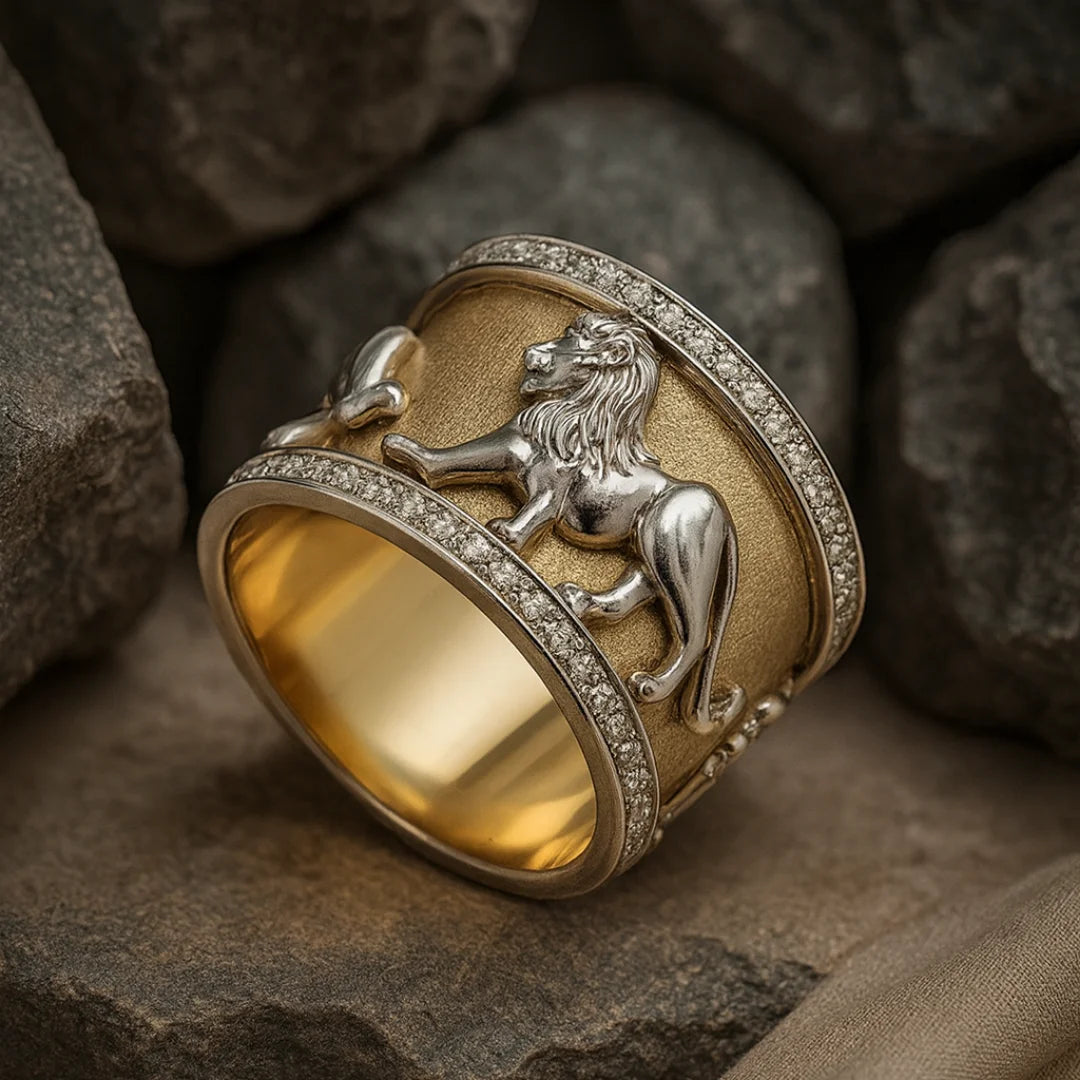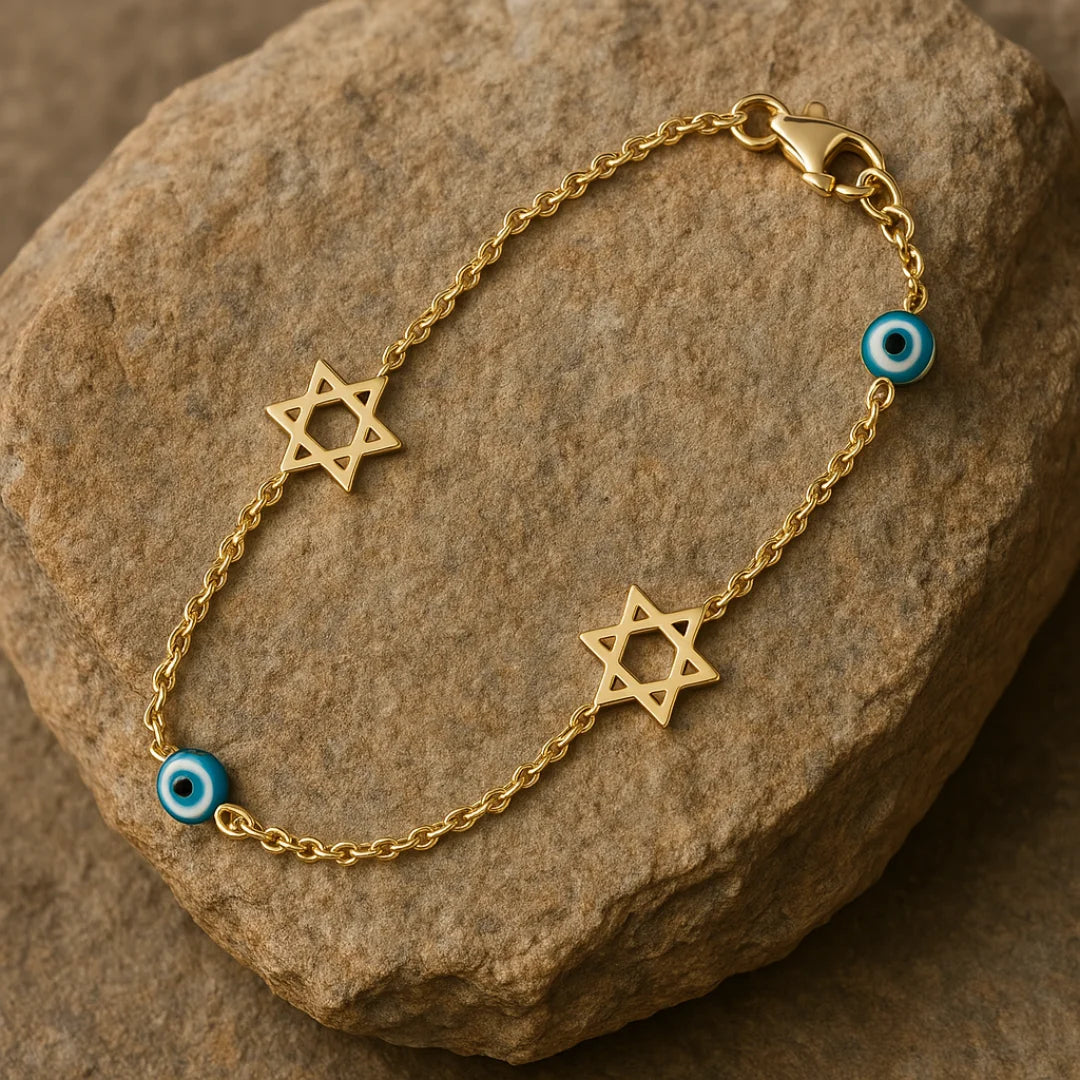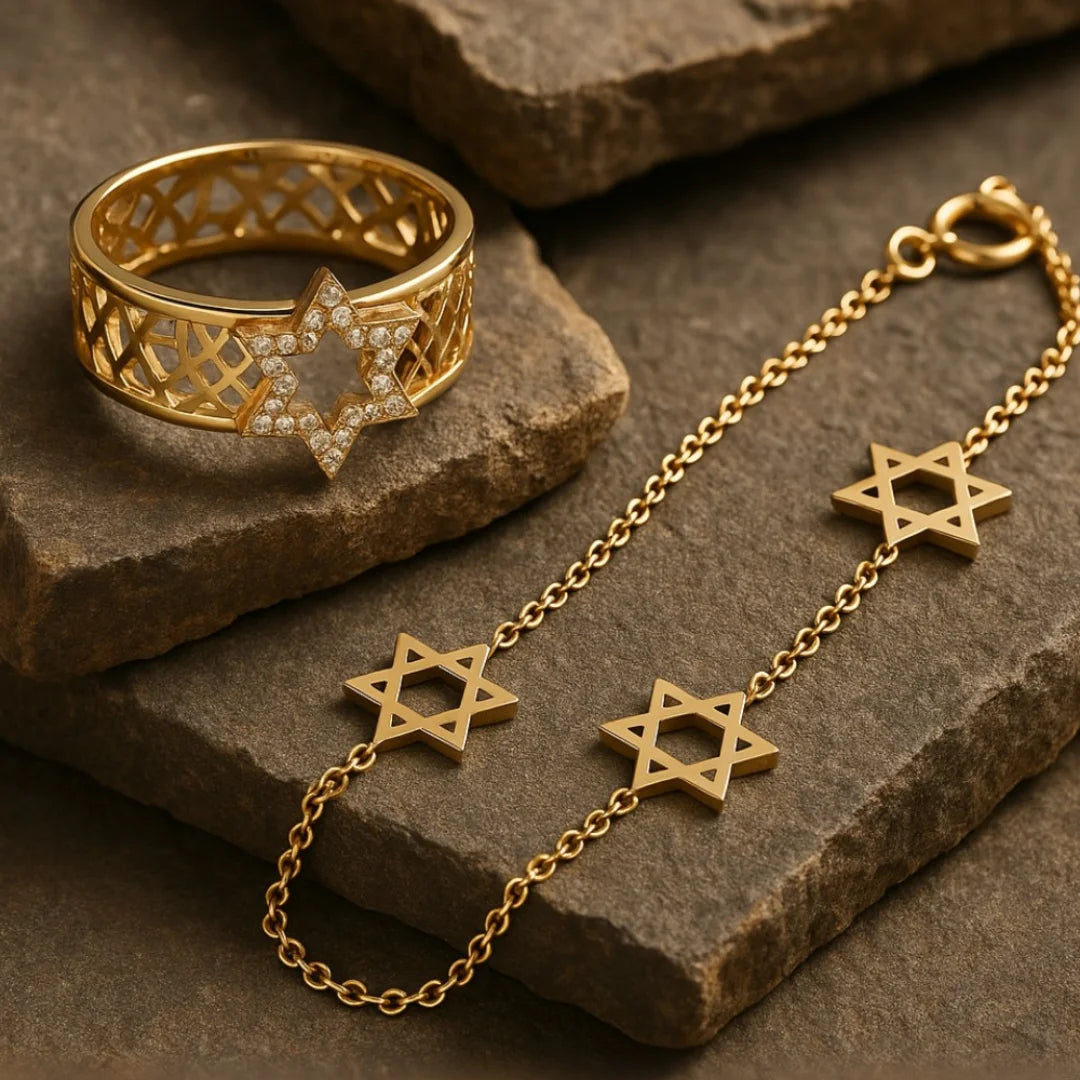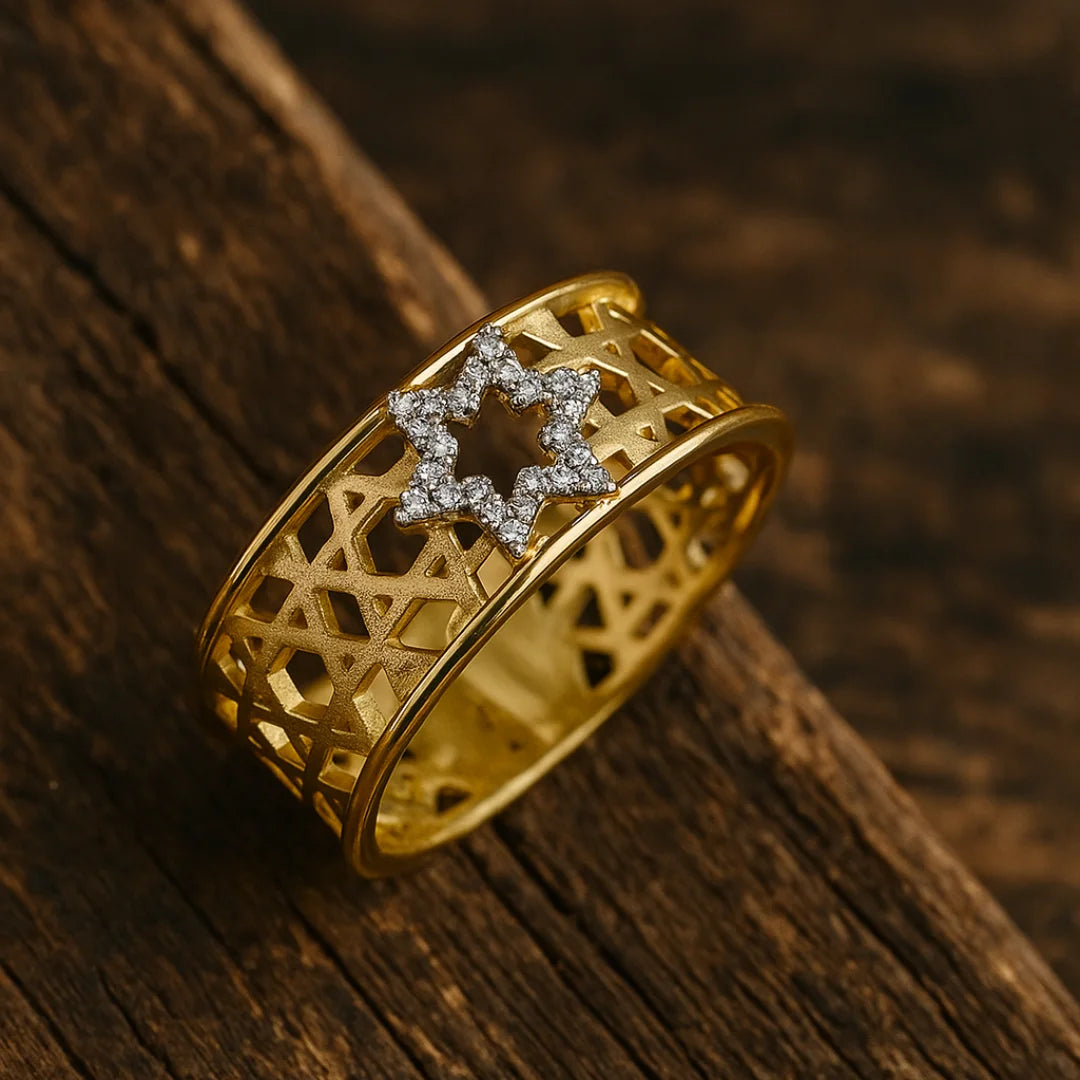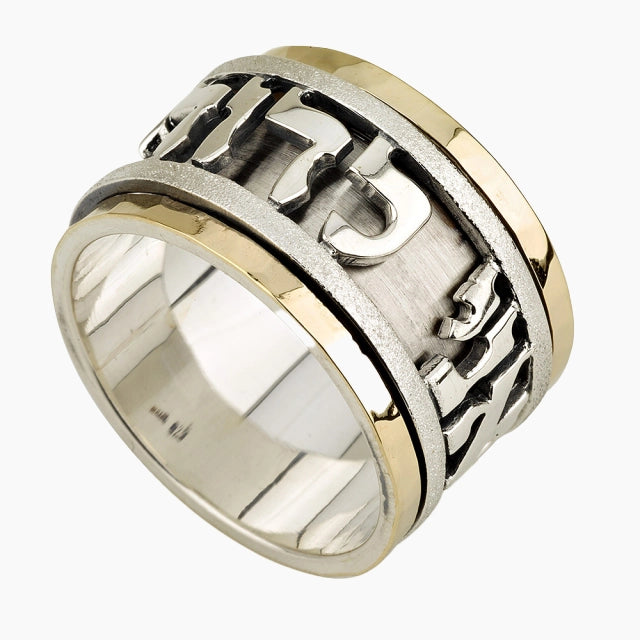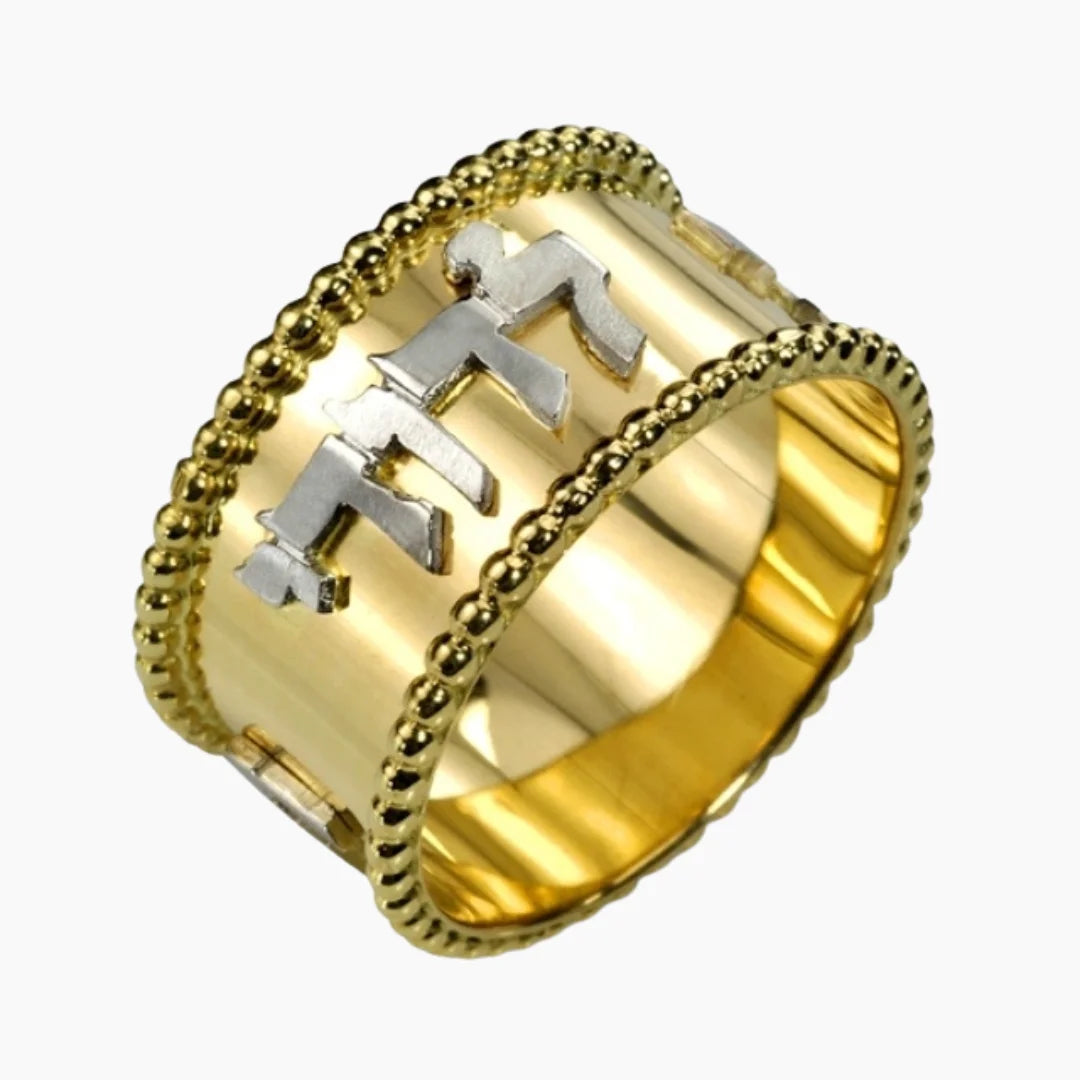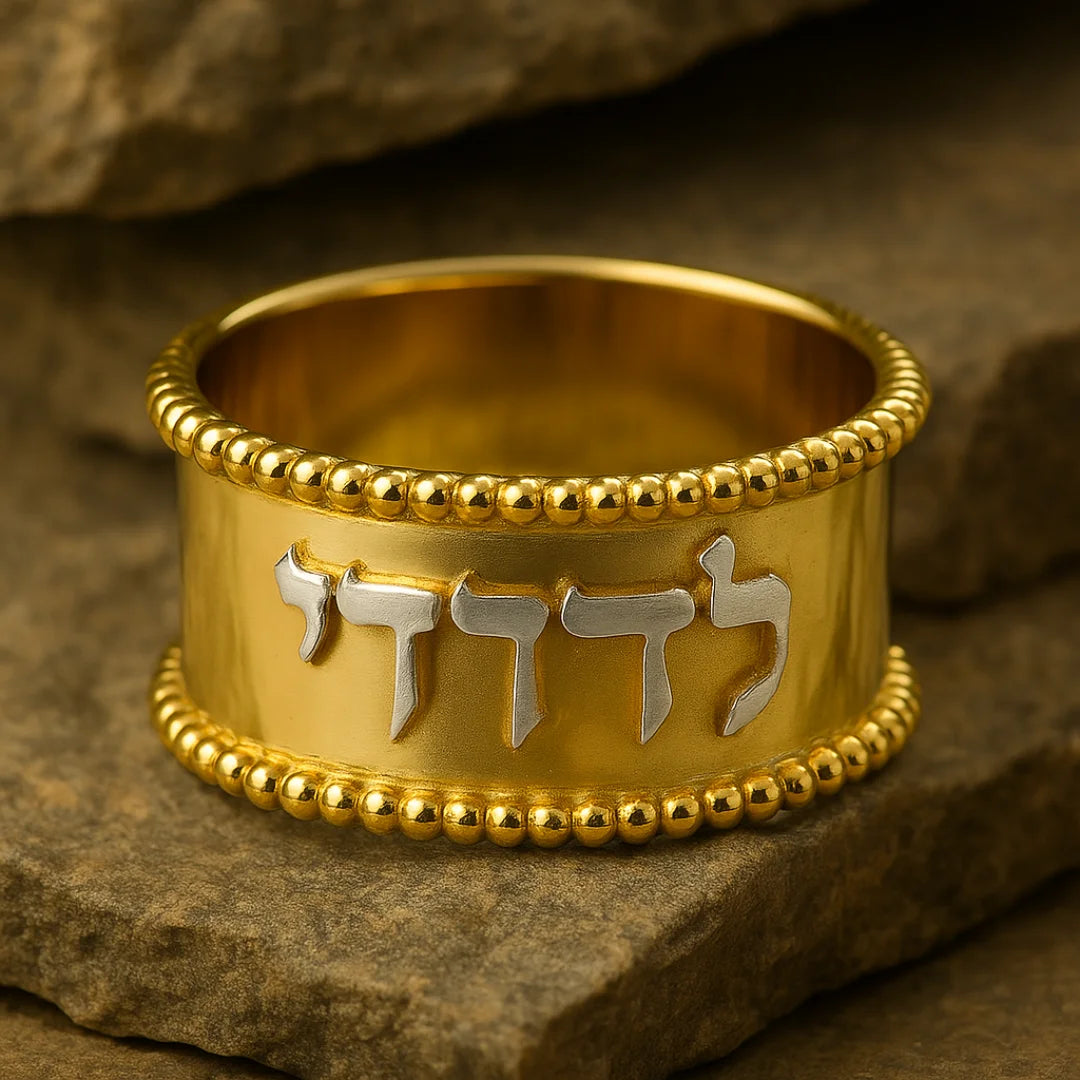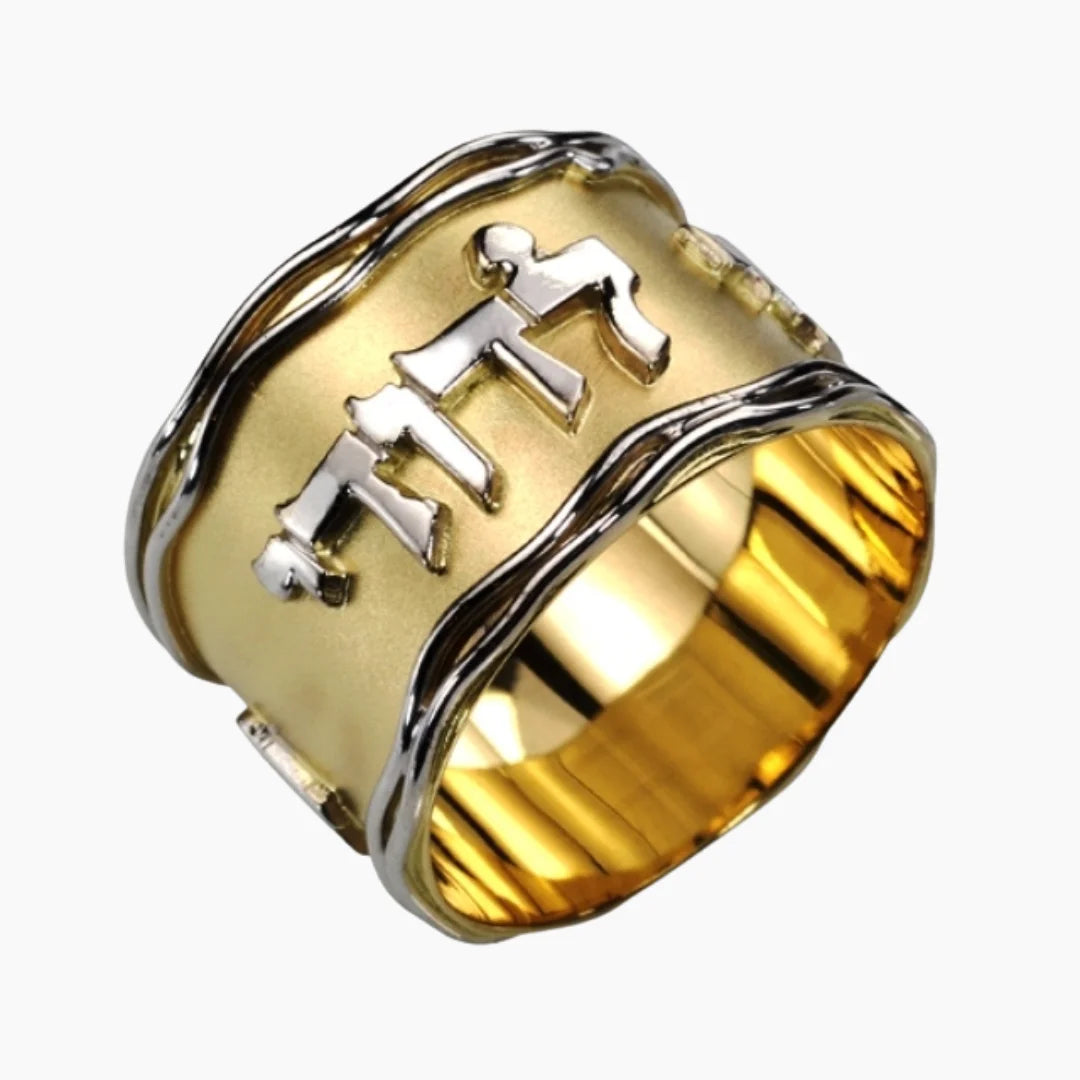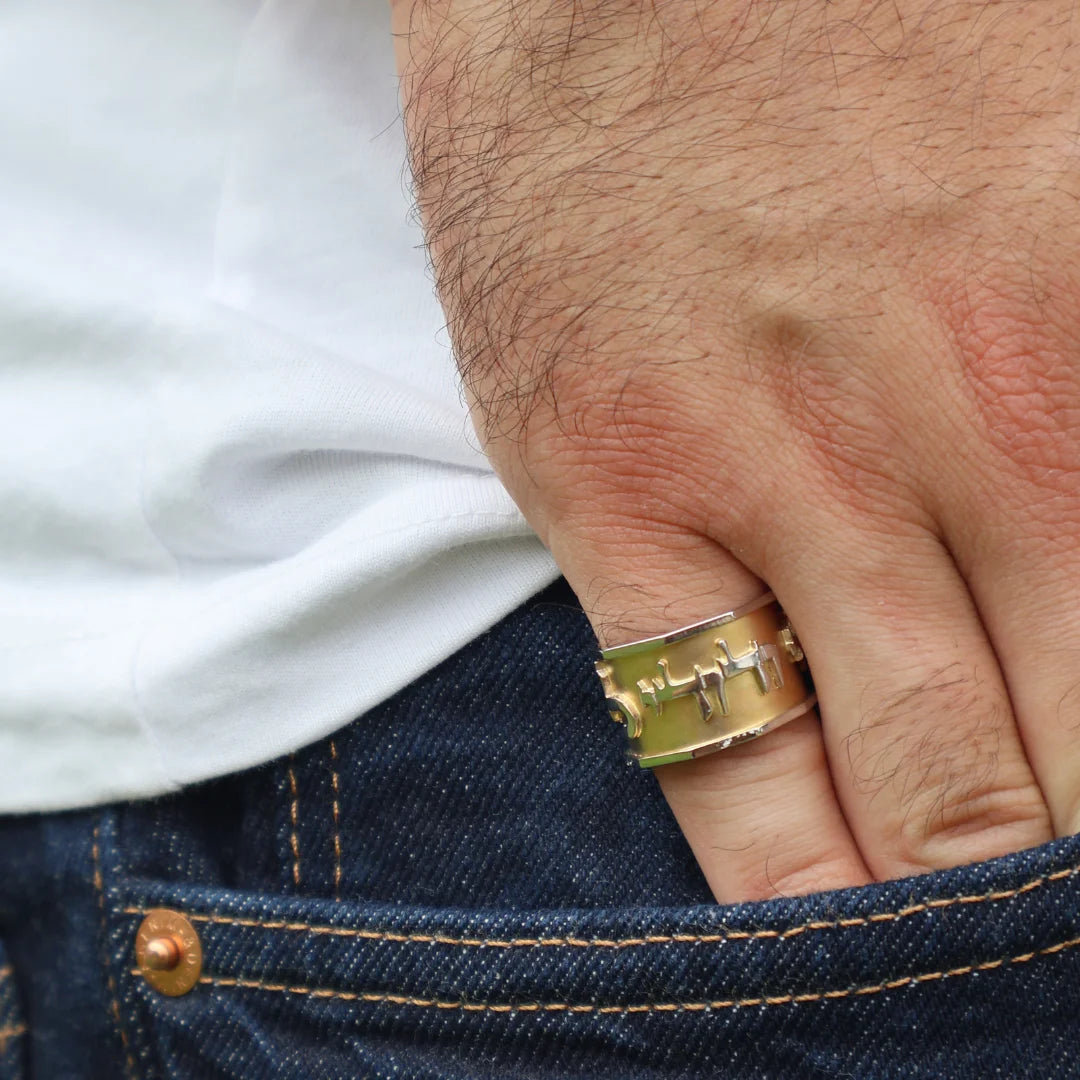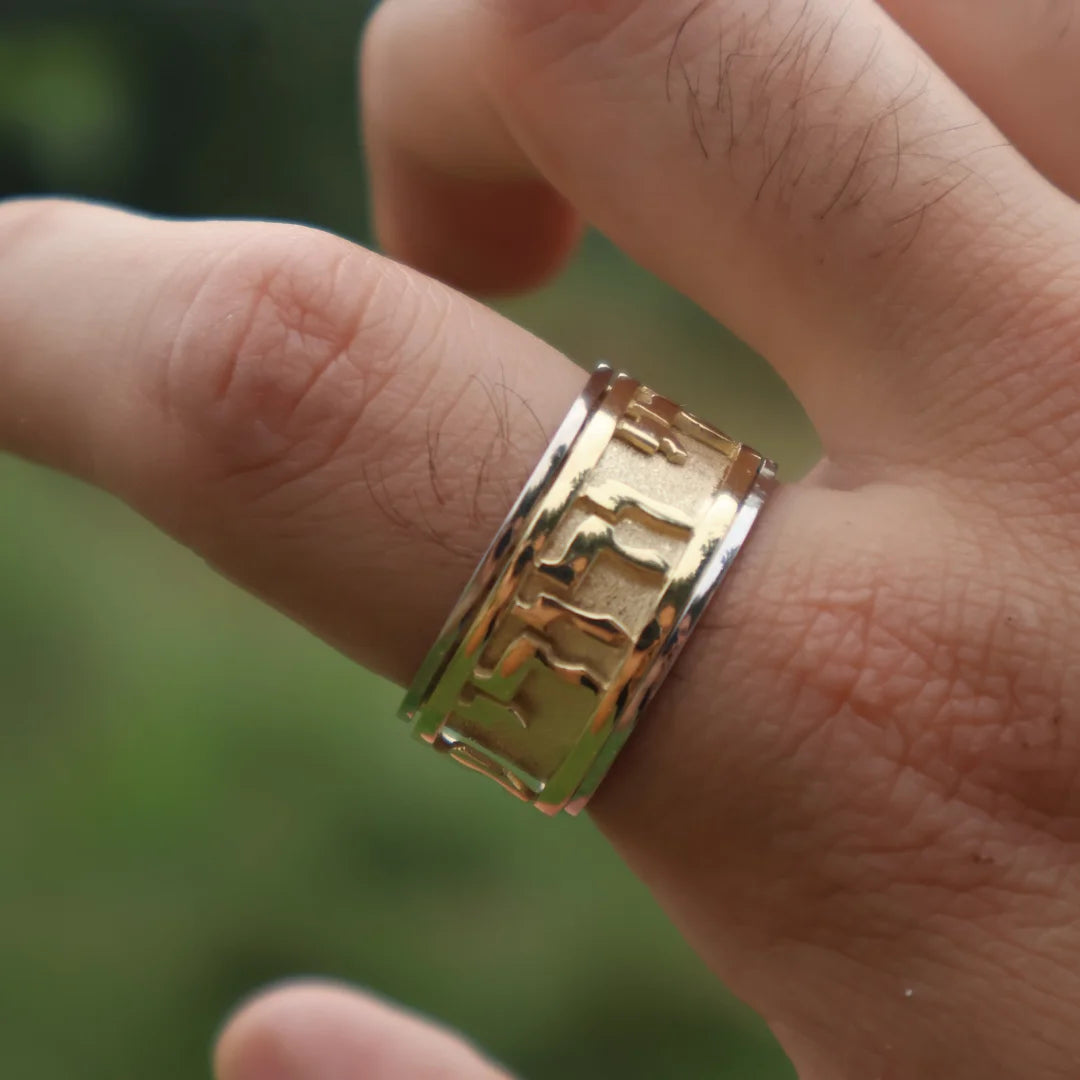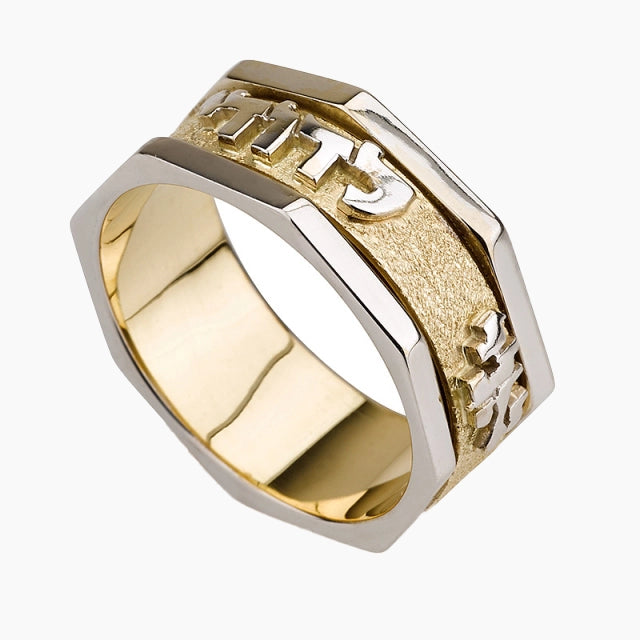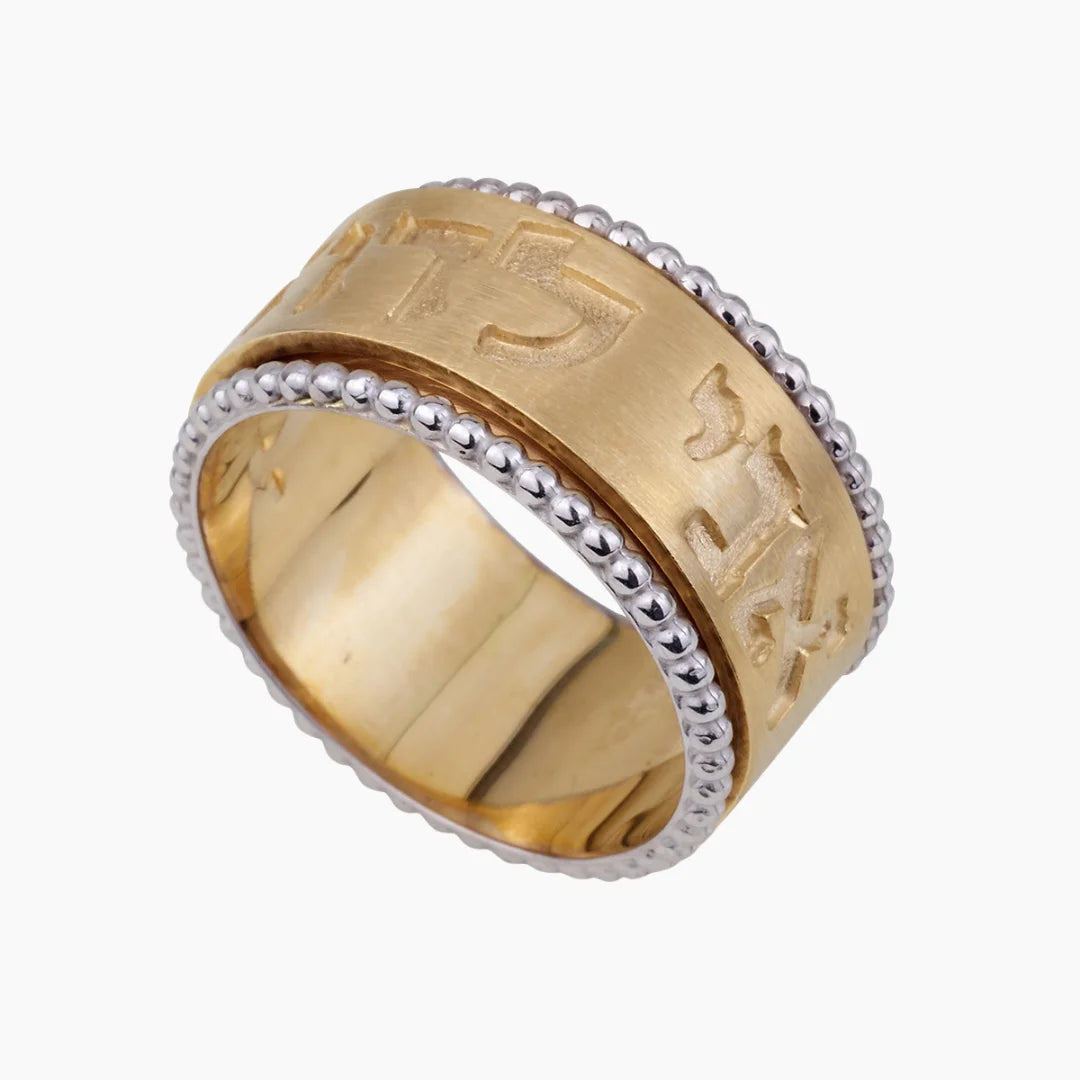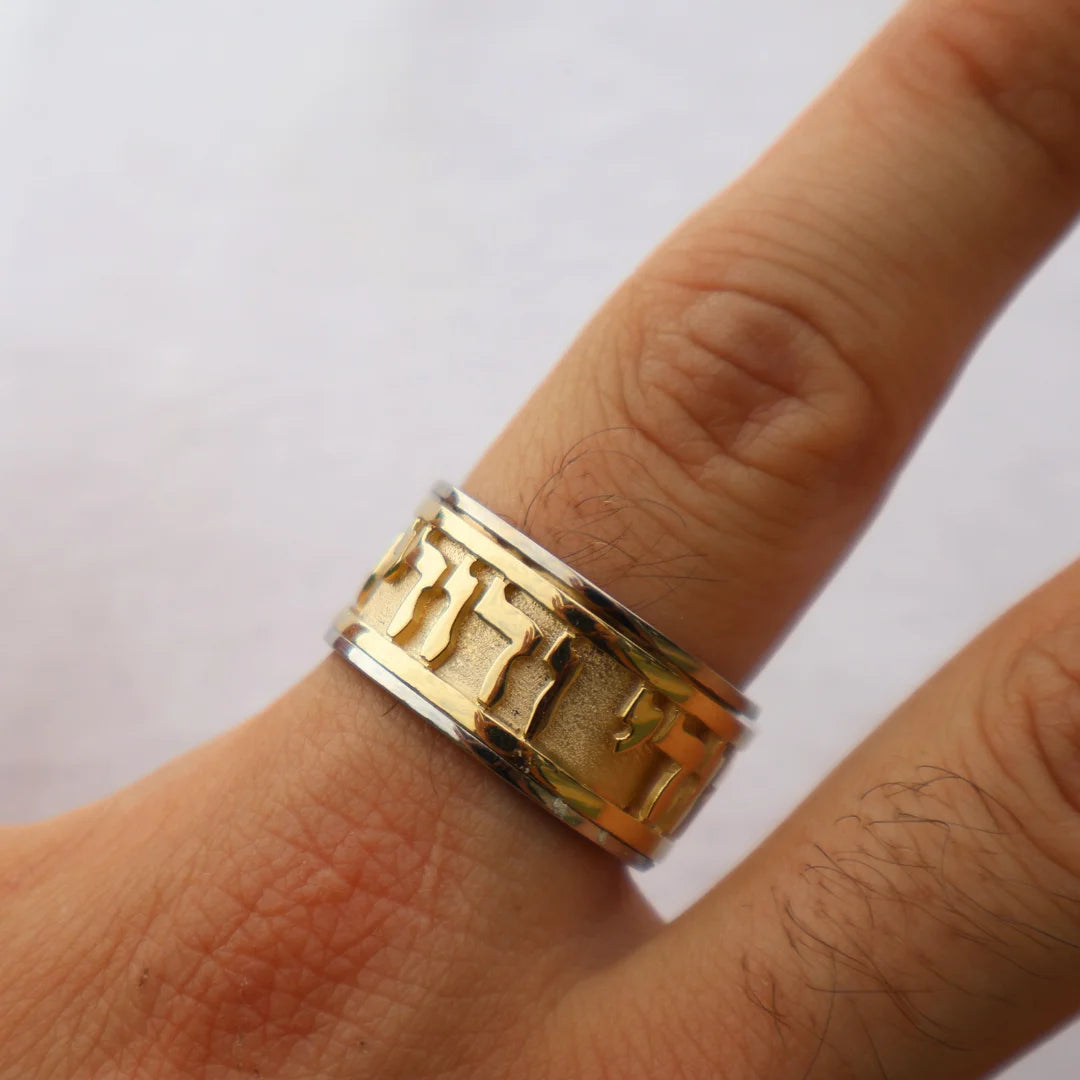
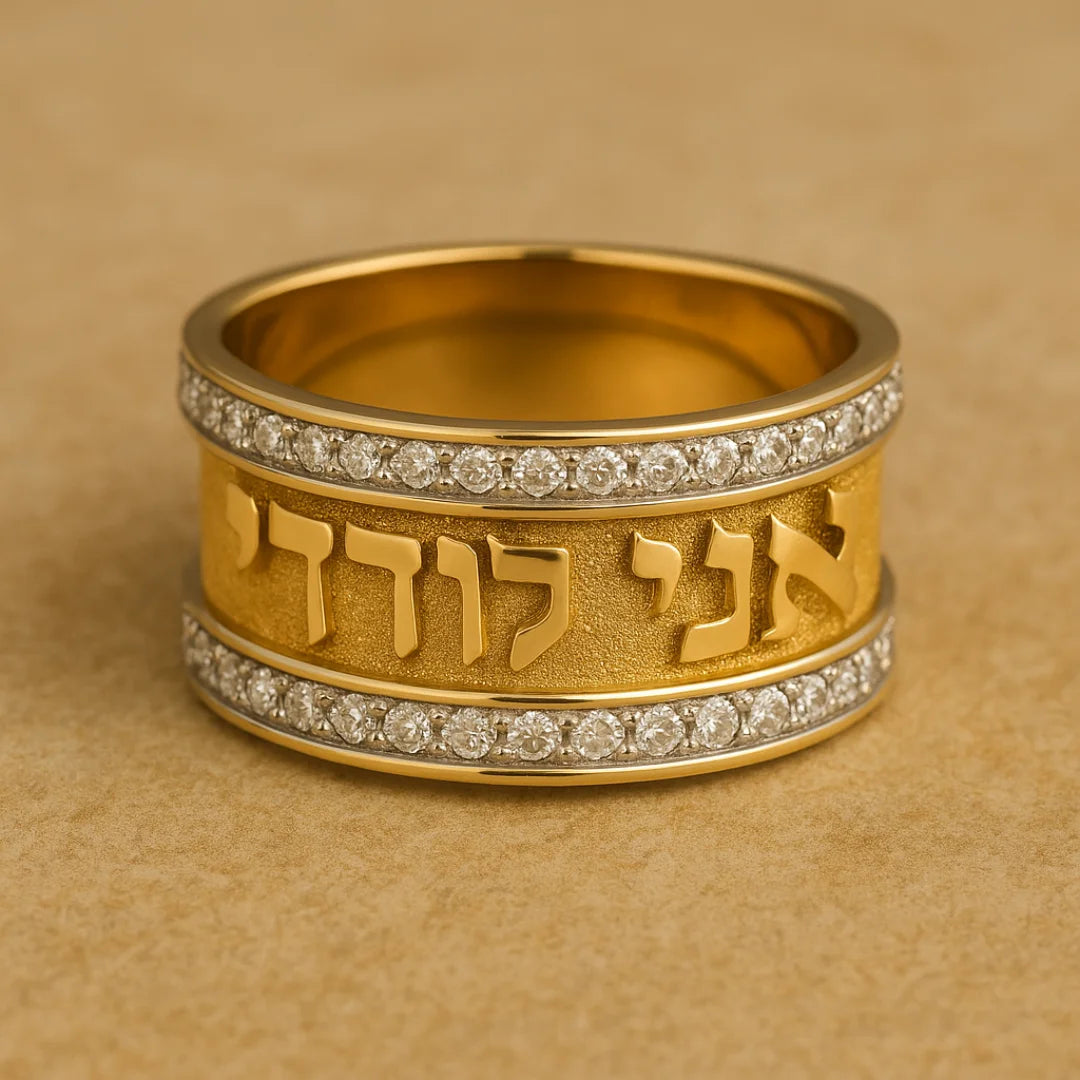
Ani Ledodi Jewelry
Ani Ledodi Jewelry: The Song of Songs Wedding Phrase in Gold & Silver
No words in the Hebrew Bible describe love as romantically as "Ani Ledodi Vedodi Li," "I am my beloved's and my beloved is mine." Those words, from Shir HaShirim (Song of Songs 6:3), have echoed through Jewish hearts for generations, symbolizing both human love and love of God.
When engraved on gold or silver, the verse becomes more than text, it transforms into a personal covenant. Each piece of Ani Ledodi jewelry carries the timeless beauty of Hebrew scripture, blending faith and affection into something tangible. It’s a love story written in holy letters, crafted by human hands and carried close to the heart.
The Verse That Captures Eternal Love
The Song of Songs, which is attributed to King Solomon, is the most poetic and most romantic Tanakh book. Behind its poetic language is an immense spiritual message: God's union of love with His people. The verse "Ani Ledodi Vedodi Li" is central to that message, famous for centuries in art and liturgy.
"Ani Ledodi Vedodi Li" - The heart of the Song of Songs
This short but powerful phrase talks about a similar, sacred, and eternal love. It is traditionally read in Jewish tradition as an echo of the love between God and Israel, a love of commitment, fidelity and closeness. It is also a declaration of human love, and that is why it is among the most important verses for wedding blessings and anniversary blessings.
The verse’s role in Jewish faith and love
Because of its double meaning, "Ani Ledodi Vedodi Li" bridges the spiritual and the personal. It is recited in prayers during the Hebrew month of Elul, which is a time of return, reflection and intimacy with God, and is written on wedding rings and jewelry as a life-time commitment of love. The same words that bind heaven and earth bind two hearts together.
The Meaning Behind "Ani Ledodi Vedodi Li"
Every word in this line has centuries of religious poetry behind it. The Hebrew name Dodi (דודי) also translates to "my beloved," but theologically describes God. The line can thus be interpreted on two levels: as a statement of courtly love and as an examination of the human eternal tie to the divine.
"I am my beloved’s and my beloved is mine" - literal and spiritual meaning
On one level, the text is of two people belonging to one another entirely, based on love, respect and reciprocal trust. On another, it is an analogue for the soul's yearning for reunion with its Maker. In Judaism, love itself is sacred because it is in imitation of God's love, pure, unselfish and eternal. The beauty of this stanza lies in the balance, in the exchange that is reciprocal. Man's heart faces God and God's heart faces man in love. Therefore, "Ani Ledodi Vedodi Li" is more than a phrase, it is a testament to the highest reason of being: to receive love freely and give it in trust.
Why this verse became a symbol of marriage and devotion
Little is it known, then, that "Ani Ledodi Vedodi Li" is one of the best-loved inscriptions on wedding bands, pendants and bracelets. It speaks of union, commitment and the sacredness of love, not ownership, but union. By wearing jewelry engraved with these words, two people are reminded of their shared commitment, engraved in the ancient language of their faith.
The Origins of Ani Ledodi Jewelry
The use of "Ani Ledodi Vedodi Li" in jewelry reaches centuries ago, driven by the ageless power of the verse and cross-cultural sensitivity of love and devotion. Over time, artists and jewellers began to engrave the words on rings, pendants and amulets, turning sacred words into wearable religion.
From scripture to art - the verse through Jewish history
Throughout Jewish history, Song of Songs passages have been incorporated into ritual, poetry, and art. Jewish goldsmiths and scribes throughout the Middle Ages had placed the inscription "Ani Ledodi" over marriage contracts, Torah ornaments, and individual jewelry. Each had been used as blessing and protection, a way of surrounding the most intimate moments in life with holiness.
Early use of Hebrew inscriptions in jewelry
Hebrew inscriptions on jewelry have been deeply meaningful for centuries. Ring and bracelet artisans in ancient Israel used to engrave blessings or couplets on jewelry to represent faith, identity, and God's love. Generation after generation, the practice continued, with "Ani Ledodi Vedodi Li" emerging as one of the most sought-after phrases, connecting the skill of the hands to the poetry of the soul.
Ani Ledodi rings in ancient and modern Israel
Ani Ledodi jewelry today in Israel is an ongoing spiritual and art form. Today's goldsmiths and Judaica craftsmen create rings, necklaces and bracelets engraved with the verse in calligraphy in Hebrew, marrying timeless scripture with contemporary beauty. Held as a daily reminder of faith or presented as a wedding ring, these pieces contain a message that will forever be potent.
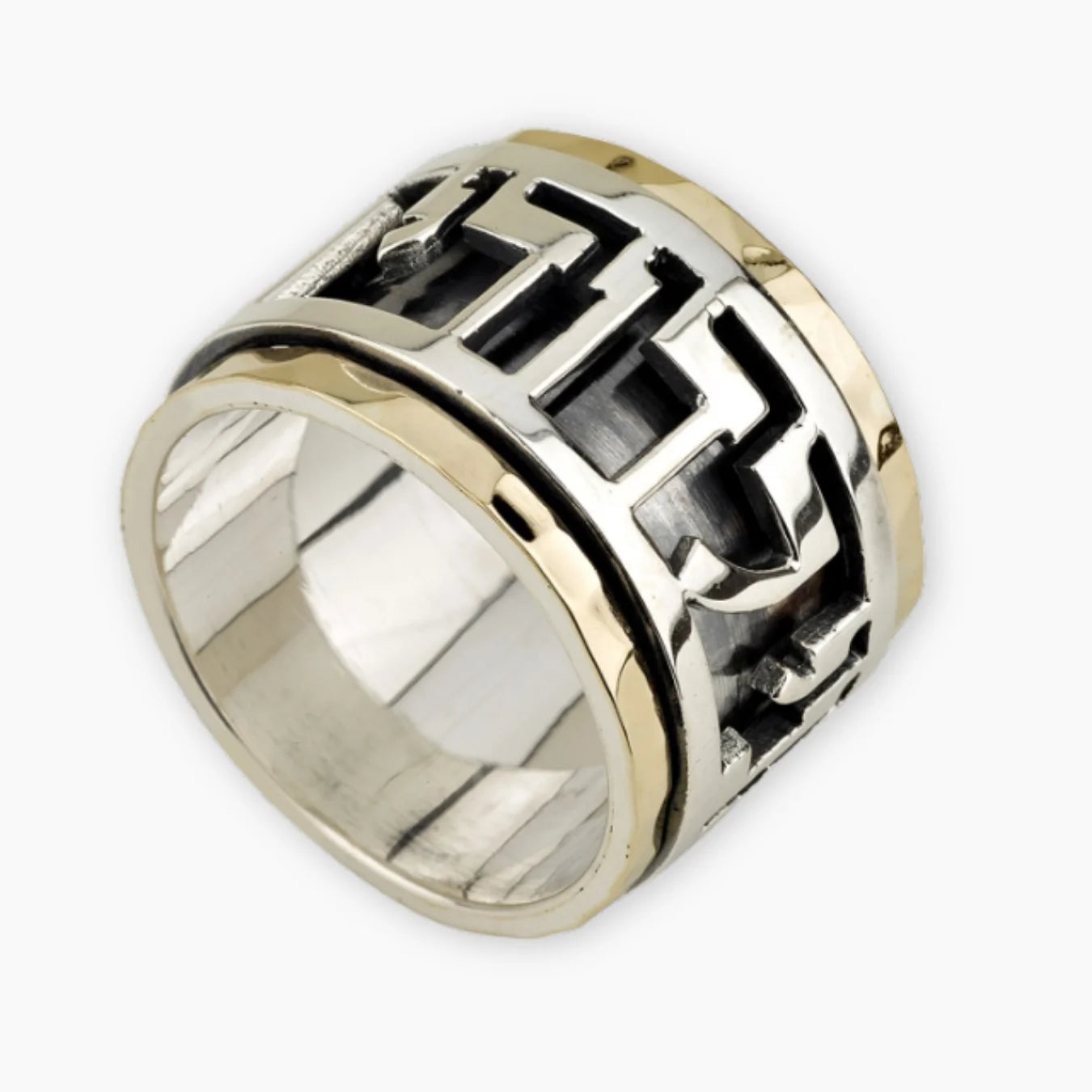
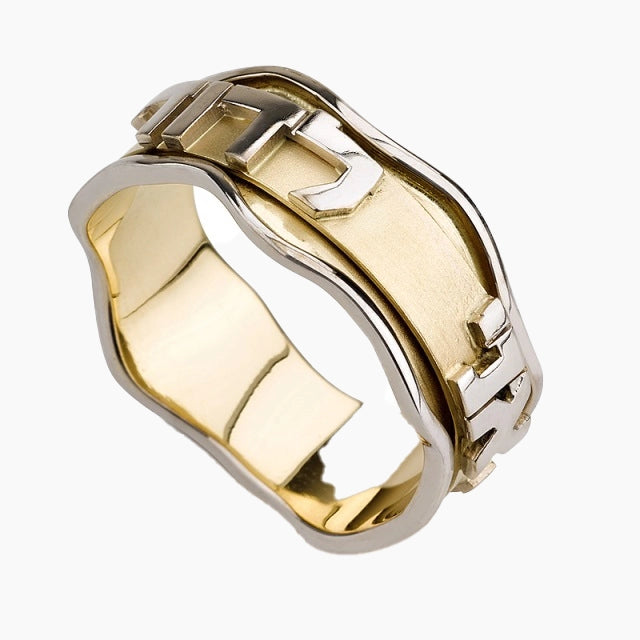
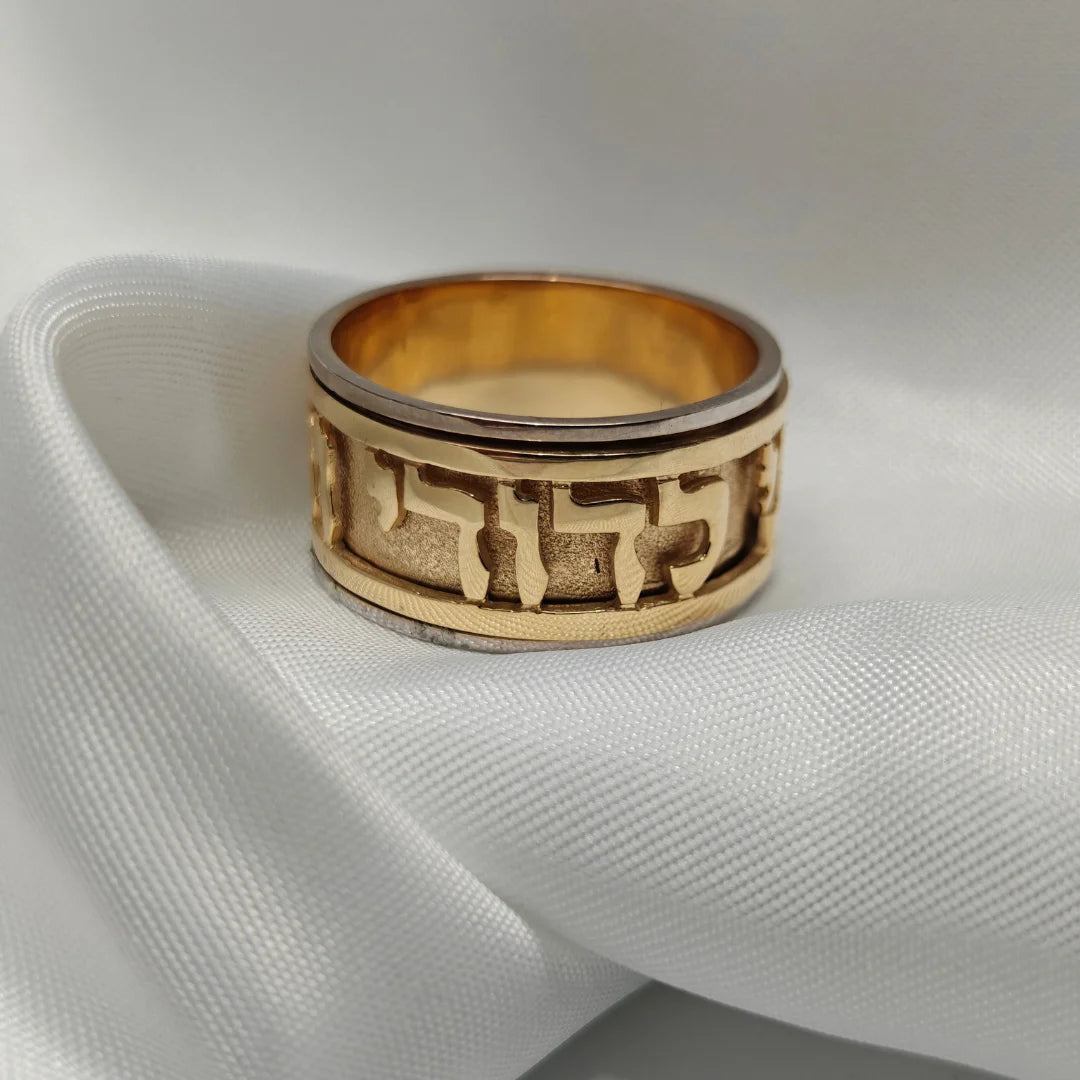
The Design and Symbolism of Ani Ledodi Jewelry
Every Ani Ledodi piece, be it a simple silver ring or intricate gold pendant, is full of story. The form, the metal and even the font type come together to convey emotion, meaning and significance. The Hebrew script letters of "Ani Ledodi Vedodi Li" are lovely and historic, their form as meaningful as their sound. Many of the artisans etch or cast the verse in cursive script, highlighting the beauty of the words themselves. Text is often embossed, etched, or edged within elaborate borders that highlight their sacredness.
The beauty of simplicity in gold and silver
Most Ani Ledodi jewelry is gold or silver, two metals rich in symbolism. Gold represents lasting, unchangeable love, while silver represents purity and loyalty. Some jewelry uses both, demonstrating the harmony between strength and gentleness in a relationship of love. Modern Ani Ledodi jewelry combines the old and the new. Some jewelry stays with the ancient Hebrew only, while others combine the verse with English translation or quiet gemstones. The result is ageless, a union of religion and design that speaks across generations. Spare or lavish, it speaks the same timeless message: spirit-consecrated love.
Ani Ledodi Jewelry for Weddings and Love
For generations, "Ani Ledodi Vedodi Li" has been a loving prayer uttered beneath wedding canopies, etched on rings and traded between sweethearts. In jewelry, it contains the romance of the moment and the sacredness of the oath.
The verse as a timeless wedding promise
In Jewish weddings, love is not just feeling, it is covenant. The words "I am my beloved's and my beloved is mine" capture that holy tie, reminding couples that love is mutual, long-lasting and based in faith. Inscribed on wedding bands or necklaces, it becomes a daily reminder in the form of a piece of jewelry that is a pledge. An Ani Ledodi ring may be the most personal translation of this verse. Typically crafted in silver or gold, such rings are often plain on the outside but bear the inscription within, a hidden reminder of strength in love behind the scenes. For others, the Hebrew text glows forth openly across the face, proclaiming commitment in the words of the ancestors. In either form, the message is the same: a love that mirrors divine constancy.
The growing popularity of couple sets and anniversary gifts
In recent years, Ani Ledodi jewelry has been a cherished choice not just for weddings, but for anniversaries and milestone events too. Matched rings, pendants, or bracelets are modern indicators of commitment, elegant interpretations of this timeless promise that began with "I am my beloved's."
Men’s and Women’s Ani Ledodi Jewelry
Though the words of "Ani Ledodi Vedodi Li" are universal, their translation in jewelry typically occurs differently for men than for women. Both, though, have the same inspiration, long-lasting love, shining faith.
Strength and devotion in men’s designs
Men's Ani Ledodi jewelry is more focused on simplicity and toughness. Solid bands of silver or gold, leather cuffs engraved with Hebrew letters, or steel and silver spinner rings are classic choices. They're earthy and tough, unobtrusive symbols of commitment and the strength that real love gives.
Grace and sentiment in women’s pieces
Women's Ani Ledodi pieces tend to express softness and relationship. Fine gold necklaces, inscribed Hebrew pendants and small rings with gemstones or filigree are especially sought after. Each piece is made to be close, elegant but rich with meaning, with a harmony of beauty and spirit.
No matter if it's for a man or a woman, every Ani Ledodi piece imparts the same feeling of being. It's not the material that one uses to make the item but the words themselves, ancient, sacred and hopeful. Every ring, bracelet, or necklace reminds us that love, just like faith, is eternal.
Modern Trends in Ani Ledodi Jewelry
With evolving times, the message of "Ani Ledodi Vedodi Li" remains as relevant now as ever, but the designs continue to evolve. Modern-day jewelers are finding new ways to blend everlasting commitment with contemporary style, keeping the verse current for a new generation.
Contemporary Israeli artistry
Ani Ledodi jewelry is now created by Israeli designers who are pioneers at making it both new and old. They've taken ancient Hebrew script and combined it with new textures and shapes, from hammered gold rings to fine silver pendants. Ani Ledodi is not fashion; it's a statement of Jewish beauty and inventiveness across the board.
Mixing materials, from gold and silver to Roman glass
Artisans are now mixing materials, combining warm gold with cool silver, or setting ancient Roman glass into precious metals. Each one produces a dialogue between then and now, reminding the wearer that love, like history, is multi-layered and timeless. Hand-engraved calligraphy in Hebrew is on the rise, paying tribute to the holy beauty of the letters themselves. Each line and curve adds depth to the verse, turning jewelry into scripture that is worn on the body. It's a way of bringing prayer and poetry into everyday life.
Featured collection
Ani Ledodi Rings
Ani Ledodi Silver with 14k Gold spinning Ring
Eternal Ani Ledodi Silver with 14k Gold spinning Ring
14K Yellow and White Gold Ani Ledodi Ring
Heritage 14K Gold Ani Ledodi Ring with spherical pearl shape
14K Gold Ani Ledodi Ring
Timeless 14K Gold Ani Ledodi Spinning Ring
14K Gold Ani Ledodi spinning Ring with straight outer ribs
Handmade 14K Yellow & White Gold Ani Ledodi Spinning Ring
Heritage 14K Gold Ani Ledodi Spinning Ring
Devotion 14K Gold Ani Ledodi Spinning Ring
Frequently Asked Questions
The Temple menorah was traditionally crafted of pure gold, to represent God's perfection. Yet, both gold and silver menorah jewelry are sacred. Gold is the symbol of holiness and eternity, while silver is that of purity and humility, both convey the splendor of divine light embodied.
The menorah signifies creation, wisdom and God's permanent presence. The seven branches signify spiritual light and the belief that God's wisdom needs to radiate outward, shining on all aspects of life.
The Temple's original seven-branch menorah and nine-branch Hanukkah menorah serve distinct purposes. The Temple menorah was a permanent religious installation, while the Hanukkah menorah commemorates the miracle of eight-day oil that took place when the Temple was rededicated.
The Hanukkah hanukkiah is nine-branched, eight for the nights of Hanukkah and a helper candle. The Temple menorah was seven-branched and was always lit as it was included in daily worship in the sanctuary. Both then and today have the same concept: the triumph of light and the presence of God with the people.
To wear menorah jewelry is a way to have that light of eternity close by. It symbolizes hope, identity and membership within Jewish heritage. It is something many find to be a reminder each day of staying strong, having faith and believing that even the faintest spark can stand up against massive darkness.




